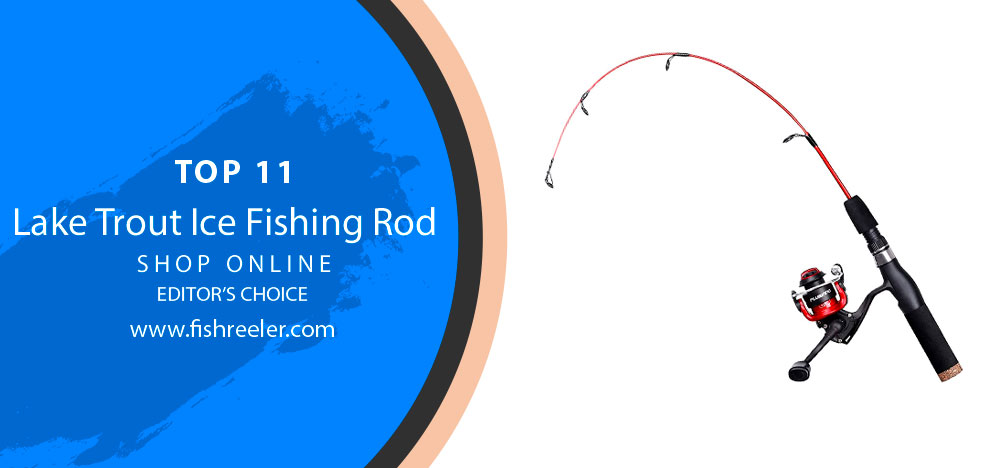
🎣 Why an Ice Fishing Rod for Lake Trout is a Game-Changer! 🎣
Hey there, frosty angler! ❄️ Thinking of upping your ice fishing game this winter? Look no further! Whether you’re a novice or a seasoned fisher, you’ll understand that not all rods are created equal. And when it comes to catching those elusive lake trout beneath the thick, icy waters, you need equipment that’s specifically tailored for the task. 🐟
🌟 Top Advantages of an Ice Fishing Rod for Lake Trout: 🌟
✅ Precision Casting: 🎯 Designed to work flawlessly in the constrained space of an ice hole.
✅ Enhanced Sensitivity: 💡 Feel even the slightest nibble, ensuring you never miss a catch.
✅ Tailored Strength: 💪 Built for the unique fight of a lake trout, balancing flexibility with durability.
🔍 What Sets It Apart From Other Rods? 🔍
☑️ Optimized Length: Shorter than regular rods, ensuring better control and combat against the trout’s mighty pull. 🚣♂️
☑️ Specialized Reel Seats: Hold reels securely, even in the iciest conditions. ❄️
☑️ Cold Resistant Materials: Ensures performance isn’t compromised in freezing temperatures. 🌡️
🔶 Dive into the world of ice fishing with the right gear and you’ll soon realize the unparalleled advantage you have with an ice fishing rod tailored for lake trout. 🏆🎣
🎣 Ice Fishing Mastery Begins with the Right Equipment 🎣
When it comes to ice fishing, the landscape is dramatically different than any other form of angling. You’re not just casting a line into open waters; you’re trying to lure a fish to bite from a small hole in a vast icy expanse. 🌬️❄️
While the stillness of the frozen lake and the serene snowy surroundings can be deeply tranquil, beneath that icy surface lies a dynamic and challenging environment. Here, the king of the waters is the lake trout, a majestic fish that thrives in the cold and knows every trick in the book. 🐟💨
🏆 Embracing the Challenge of Winter Trout Fishing 🏆
There’s a particular thrill in targeting lake trout during winter. Imagine this: the world above is silent, but below the ice, a game of wit and strategy is being played. Lake trout are smart, feisty, and remarkably agile, especially considering their size. Every seasoned ice angler knows the exhilaration of feeling that powerful tug on the line, the weight of a lake trout deciding it’s time to dance.
🔶 However, this dance is not a simple waltz—it’s a tango of strength, strategy, and skill. And like any intricate dance, it demands the right equipment. Just as you wouldn’t wear flip-flops to a snowball fight, using a regular fishing rod on an ice fishing expedition could lead to missed opportunities and broken gear. Specialized equipment is not a luxury; it’s a necessity. 🚀❄️
🌌 The Mystical Realm of Ice Fishing: A World Apart 🌌
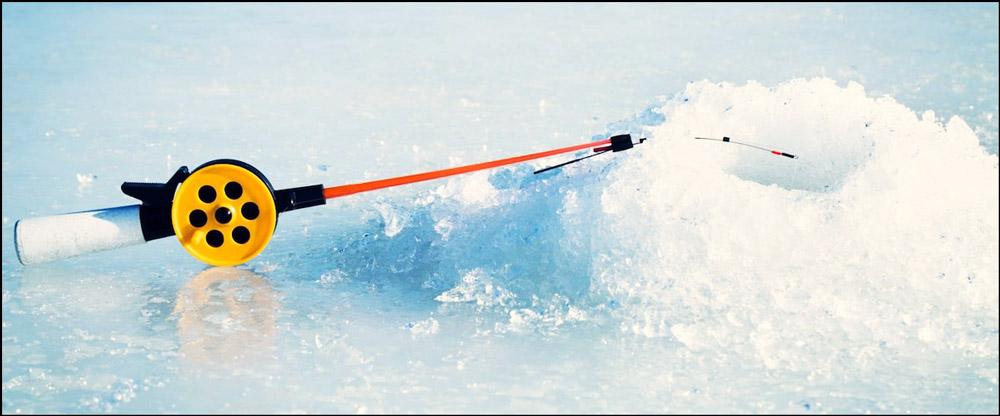
Stepping onto a frozen lake is like entering another universe. The vast expanse of white stretches endlessly, punctuated only by the dark circles of drilled holes, acting as gateways to the world beneath. These aren’t just holes in the ice; they’re portals to a submerged realm teeming with life, mystery, and the promise of a catch. 🕳️🌊
❄️ A Snapshot of the Ice Fishing Landscape ❄️
Upon setting foot on the frozen surface, you’ll quickly realize that this isn’t your average fishing trip. The tools are different: from ice augers, essential for drilling those perfect holes, to specialized sleds that help transport gear across the slippery surface. The environment is a silent, frosty wonderland, where each breath turns to mist and the crunch of snow underfoot is often the only sound.
Below the ice, however, it’s a different story. Schools of fish navigate the cold waters, with lake trout reigning supreme. In this quiet aquatic world, sounds are amplified — the subtle swish of a fish tail, the distant hum of underwater currents. It’s a place where patience, strategy, and skill converge, giving anglers a chance to engage with nature in its most pristine form. 🐠🌨️
🌊 Ice Fishing vs. Open Water Fishing: A Stark Contrast 🌊
If you’ve ever cast a line in open waters, you know the thrill of the wind in your hair, the gentle sway of the boat, and the vastness of the waters around you. Ice fishing, on the other hand, offers a more intimate and focused experience.
🟨 Environment: In open water, you’re constantly adjusting to waves and weather, while in ice fishing, you’re stationary, with nature’s icy expanse as your playground.
🟨 Equipment: Open water fishing often requires long casts and versatile gear. Ice fishing is about precision, with short rods tailored for vertical jigging and specific lures designed for the icy depths.
🟨 Strategy: While both forms require strategy, ice fishing often involves more patience. With limited mobility and a smaller fishing zone, it’s all about luring fish to your spot and waiting for that perfect bite.
🟨 Connection: Ice fishing offers an unparalleled connection to the environment. With the world muffled by snow and ice, it’s just you, the frozen surface, and the life beneath, providing a tranquil yet exhilarating experience. 🎣❄️
A Guide to Choosing the Best Lake Trout Ice Fishing Rod
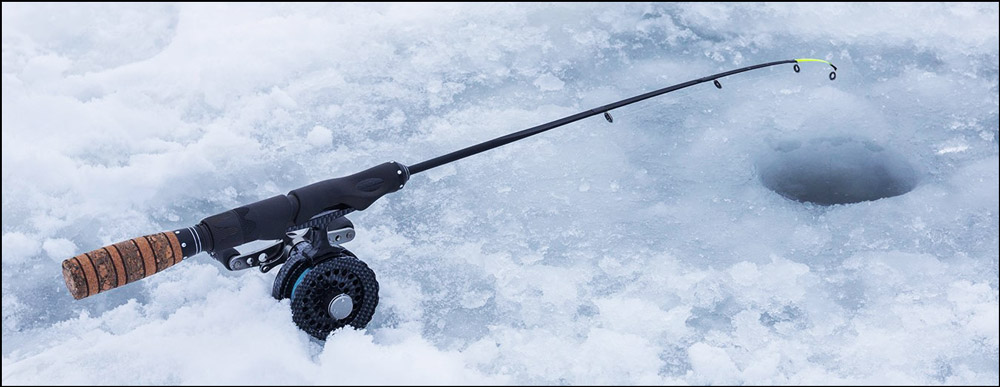
Ice fishing for lake trout is not for the faint of heart. These fish require patience, skill, and the right gear to catch. One of the most critical pieces of equipment for this type of fishing is the rod. A good lake trout ice fishing rod needs to be strong and sensitive, capable of detecting even the slightest nibble from a fish deep beneath the ice. It also needs to be durable enough to withstand the harsh winter conditions and the force of a fighting fish. In this post, we’ll dive into the different types of ice fishing rods available for lake trout and help you choose the best one for your needs.
Although the popularity of ice fishing for trout has dwindled in recent years with the explosive growth of catch and release fly fishing, there’s still a good number of dedicated anglers out there who love to target these fish through the ice. Looking for a great ice fishing rod for lake trout?
The Pros and Cons of Different Lake Trout Ice Fishing Rods
When it comes to rods, the materials used in their construction can greatly impact their performance and durability. Understanding the pros and cons of different materials can help you select the best rod for your needs.
⌛ Here are some common materials used in lake trout ice fishing rods, along with their advantages and disadvantages:
- Fiberglass: Fiberglass is a popular material for ice fishing rods due to its affordability and durability. Fiberglass rods are flexible and forgiving, making them a good choice for beginners or those targeting smaller fish. However, they tend to be heavier and less sensitive than other materials.
- Graphite: Graphite is a lightweight, sensitive material that is popular for ice fishing rods. Graphite rods are highly responsive, making them a good choice for detecting bites and fighting large fish. However, they tend to be more expensive than fiberglass and may be more prone to breaking.
- Carbon Fiber: Carbon fiber is a strong, lightweight material that is often used in high-end ice fishing rods. Carbon fiber rods are highly sensitive and responsive, with excellent casting distance and accuracy. However, they are also the most expensive option and may be too sensitive for beginners.
- Composite: Composite rods are made from a combination of materials, often including graphite and fiberglass. This creates a balance of sensitivity and durability, with some models designed specifically for targeting lake trout. However, composite rods can be heavier and less sensitive than pure graphite or carbon fiber rods.
Must-Have Features for a Successful Lake Trout Ice Fishing Rod
When it comes to choosing the right lake trout ice fishing rod, there are several key features to look for to ensure a successful day on the ice.
⌛ From guides to reel seats, here are some must-have features for a high-quality ice fishing rod:
- Guides: Look for guides that are made from durable materials, such as stainless steel or titanium, to prevent corrosion and damage to your line. The guides should also be spaced evenly along the rod to ensure smooth casting and retrieval.
- Handle: The handle of your lake trout ice fishing rod should be comfortable and ergonomic, with a non-slip grip to prevent your hands from slipping when wet or cold. Cork and foam handles are popular choices, but consider trying out different materials to find what works best for you.
- Reel Seat: The reel seat is part of the rod that holds your reel in place. Look for a reel seat that is sturdy and easy to adjust, with a secure locking mechanism to prevent the reel from slipping or wobbling during use.
- Length: The length of your lake trout ice fishing rod will depend on your personal preference and the type of fishing you plan to do. Longer rods offer greater casting distance, while shorter rods provide greater control and sensitivity. Consider trying out different lengths to find what works best for your needs.
- Power and Action: The power and action of your rod will also depend on your fishing style and the size of fish you plan to target. Power refers to the amount of force needed to bend the rod, while action refers to the speed at which the rod returns to its original position. Look for a rod with the right combination of power and action to suit your needs.
Top 11 Best Lake Trout Ice Fishing Rods on the Market
The thrill of ice fishing for lake trout is undeniable, but without the right equipment, it can quickly turn into a frustrating and fruitless endeavor. There are a lot of factors to consider, and we’ve compiled the top-rated rods to help you make the best decision for your next trip. Check out our favourites below!
1# 13 Fishing Tickle Stick Ice Spinning Rod
Looking for a reliable ice spinning rod that can help you detect strikes and set hooks with ease? Look no further than the 13 Fishing Tickle Stick Ice Spinning Rod. Featuring Parallel Composite Construction, this rod is designed with linear fibres that create a flat tip – making it easier for you to notice when a fish bites. The flat tip also adds extra rigidity, so you can be confident your hook will stay in place. Plus, the Evolve Finesse reel seat and cork handle provide a comfortable grip in cold weather, while the ALPS thin wire guides help reduce ice build-up. Whether you’re an experienced angler or just getting started, the Tickle Stick Ice Spinning Rod is a great choice for anyone!
2# Fenwick Eagle Ice Rod
The Fenwick Eagle Ice Rod is the perfect choice for hard-water fishing enthusiasts. Featuring a solid carbon blank, this rod is both sensitive and tough, while the lightweight stainless steel guides are built to withstand harsh conditions. The ergonomic reel seat ensures a solid connection between rod and reel, and the burled cork handle provides a nonslip grip.
3# Clam Straight Drop Ice Rod
The Clam Straight Drop Ice Rod is made from lightweight glass, this versatile rod features oversized fly guides, a twister stripper guide, and a shortened EVA handle with an ergonomic taper toward the blank. That means easier handling and increased sensitivity when you need it most. don’t let the cold weather slow you down – get out there and enjoy your favourite winter activities with the Straight Drop Ice Rod from Clam.
4# Berkley Lightning Rod Ice Combo
Check out the Berkley Lightning Rod Ice Combo! This combo features a lightweight, ported aluminium spool reel with a 4-bearing system for smooth operation, plus a 100% fibreglass blank rod with a full cork handle for incredible sensitivity. The down-locking reel seat ensures your reel stays in place, while the stainless steel guides and inserts provide lasting durability. Whether you’re a beginner or a seasoned pro, the Berkley Lightning Rod Ice Combo is sure to help you land your next big catch!
5# G.Loomis IMX-PRO Ice Spinning Rod
Introducing the G.Loomis IMX-PRO Ice Spinning Rod. This rod is built with IMX-PRO multi-taper blank construction, making it incredibly durable and reliable. It’s available in both tubular Fast Action and solid Extra-Fast Action styles, so you can choose the perfect model for your needs. The Hybrid Guide System with durable solid stainless steel tip is ultra-lightweight and provides superior performance. And the cork handles and hook keeper are both comfortable and convenient. So whether you’re targeting big game fish or smaller panfish, the G.Loomis IMX-PRO Ice Spinning Rod is the perfect choice for a great day!
6# Abu Garcia Veritas Ice Spinning Rod
The Abu Garcia Veritas Ice Spinning Rod is just what you need to make your next ice-fishing trip more successful. The 24Ton graphite blank is designed for durability and strength, while the stainless steel guides and Zirconium inserts give you the edge you need when fighting fish. The durable high-density EVA grip ensures strike sensitivity, so you can be sure to feel even the smallest bite. And the ergonomic Abu-designed reel seat delivers a comfortable hand hold and secure reel connection. So don’t go out on your next ice-fishing adventure without the Abu Garcia Veritas Ice Spinning Rod.
7# St. Croix Croix Custom Ice-Fishing Rod
Check out the St. Croix Croix Custom Ice-Fishing Rod! This top-of-the-line series features extreme-performance blanks, made with innovative designs and premium components that are specific to each model. Whether you’re fishing straight down through the ice or targeting a specific technique, these rods are sure to give you the results you’re looking for. Choose from three different blank platforms – Solid Carbon (SC), Solid Glass (SG), and Tubular Carbon/Glass (TCG) – each of which offers its own unique benefits.
8# Ugly Stik GX2 Ice Fishing Rod
Whether you’re targeting panfish, walleye, or pike, the Ugly Stik GX2 Ice Fishing Rod has the power and sensitivity to help you land your catch. Featuring Ugly Tech construction with a graphite/fibreglass blank, this ice fishing rod is built to withstand the coldest conditions. Ugly Tuff guides provide durability and strength, while the clear tip delivers unmatched sensitivity. With all the reliability of Ugly Stik technology, the GX2 Ice Fishing Rod is your go-to choice for a great day on the ice.
9# 13 FISHING Widow Maker
The 13 FISHING Widow Maker is a high-performance ice fishing rod made from 36Ton Solid Body Toray Graphite. It’s extremely sensitive and light, giving you the advantage when targeting fish through the ice. The cork handle is hand-selected for quality and comfort, while the ALPS Thin Wire Double Diamond Coated Guides provide durability and smoothness when casting.
10# Clam Corporation 12012 Genz Split Handle Rod
Looking for a tough and reliable ice fishing rod? Look no further than the Clam Corporation Genz Split Handle Heavy Action Rod. This high-quality rod is built to withstand any element and is perfect for those who want to enjoy hard water fishing without having to worry about their equipment. With a durable design and quality construction, the Clam Corporation Genz Split Handle Heavy Action Rod is a great choice for serious ice fishermen.
11# PLUSINNO Ultralight Winter Ice Fishing Rod Reel Combo
The PLUSINNO Ultralight Winter Ice Fishing Rod Reel Combo is just what you need! This combo offers durability and performance ideal for the serious ice angler, with a fast action tip and high-quality fibreglass construction for superior sensitivity and strength. The reel’s body and rotor are made from lightweight aluminium for reduced weight without sacrificing strength and durability, while 3+1 bearings and precision gears engagement offers a super-smooth performance. Stainless steel guides with ceramic inserts make for smooth line movement, and the whole setup is ultra-light for easy handling out on the ice.
🎣 Why a Specialized Rod is Non-Negotiable in Ice Fishing 🎣
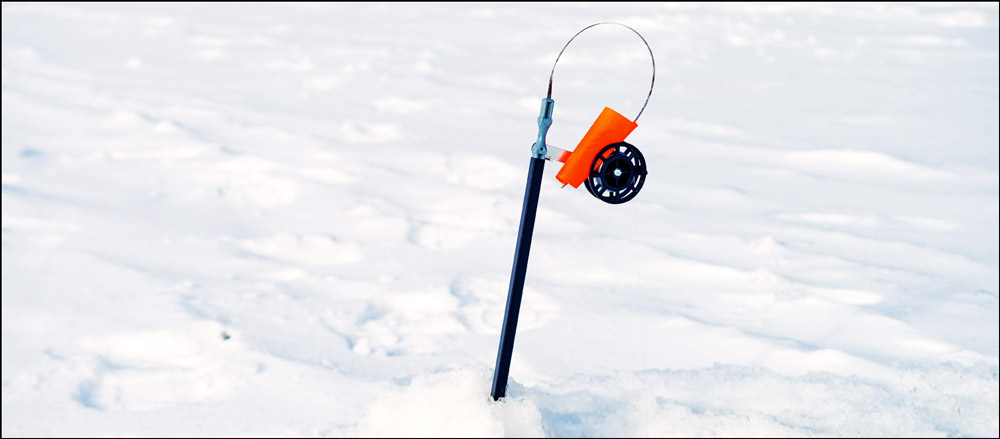
With the unique challenges of ice fishing, a specialized rod isn’t just a recommendation; it’s an absolute necessity.
🕳️ Fishing Through a Window: The Ice Hole Challenge 🕳️
🟪 Limited Space: Unlike open water fishing, where you cast into vast expanses, ice fishing restricts you to a small opening. This means your rod needs to operate effectively within this limited space, demanding shorter, more maneuverable designs. 📏
🟪 Vertical Fishing: Most of your fishing actions are vertical, from dropping the lure to setting the hook and reeling in. This vertical approach requires a rod with the right balance of flexibility and strength to handle the weight and fight of the fish. ⬆️
🟪 Sensitivity is Key: In the numbing cold, fish bites can be more subtle. A specialized rod offers heightened sensitivity, ensuring you detect even the faintest tug from a curious lake trout. 🐟💤
🐟 Battling the Behemoth: Lake Trout’s Powerful Duel 🐟
🟩 Powerful Swimmers: A lake trout’s robust build and swift movements mean that once hooked, they’ll give quite a fight. This intense struggle demands a rod that can withstand sudden jerks and powerful dives. 🌊
🟩 Equipment Strain: The combination of cold temperatures, which can make materials more brittle, and the strength of a lake trout can strain or even break inadequate rods. A specialized rod is crafted using materials that remain resilient in cold while offering the necessary backbone to counter the fish’s power. ❄️🛡️
🟩 Flexibility Matters: A lake trout will often make a sudden dash or dive in an attempt to free itself. Your rod needs to flex without snapping, absorbing the fish’s energy and ensuring a higher success rate in landing the catch. 🌈
🔶 Choosing a specialized rod for ice fishing is like selecting the right sword for a knight. As you venture onto the frozen lakes in pursuit of the majestic lake trout, arm yourself with a rod that rises to the occasion, turning challenges into triumphs. 🎣🏆
🎣 Essential Features of an Ice Fishing Rod for Lake Trout 🎣
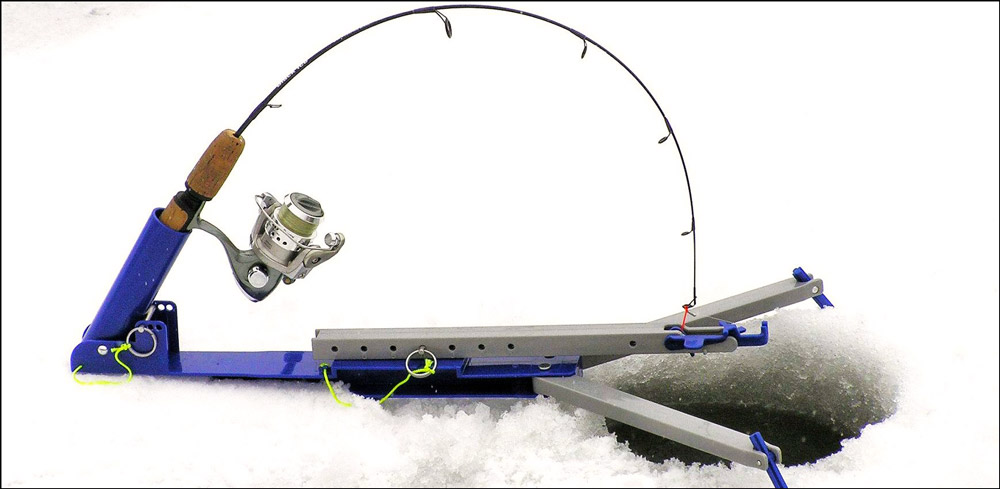
Venturing onto the icy expanse with hopes of landing a lake trout requires more than just determination and skill; it demands a specialized partner, your fishing rod. But what features should this rod possess to truly rise to the challenges of ice fishing?
📏 Optimized Length: Shorter, but Mighty 📏
🟫 Why Shorter is Better: Traditional casting isn’t the name of the game in ice fishing. Instead, you’re working within the confines of a small hole. A shorter rod offers better control, allowing you to work your lure precisely and respond quickly to fish movements.
🟫 Maneuverability and Handling: Shorter rods, usually between 24 to 36 inches, allow for swift action – be it jigging, setting the hook, or reeling in your catch. They ensure you aren’t overextending or struggling to manage your lure in the restricted space.
🌟 Sensitivity: Feel Every Nudge and Nibble 🌟
⬜ Detecting the Stealthy Bites: In the cold, a lake trout’s bite can be a gentle tap rather than a forceful tug. Your rod needs to be sensitive enough to relay even the most delicate of nibbles, ensuring you never miss an opportunity.
⬜ Designing for Sensitivity: High-quality graphite or carbon fiber are often materials of choice. Their lightweight construction paired with a design that emphasizes a responsive tip section ensures you’re attuned to every underwater movement.
💪 Strength and Flexibility: The Dual Powerhouse 💪
🔳 Tackling the Trout’s Tenacity: Lake trout are not just about subtle nibbles. Once hooked, they’re fighters. Your rod should be strong enough to handle the forceful pulls and sudden dives, yet flexible enough to bend without breaking.
🔳 Craftsmanship and Materials: Combining carbon fiber or graphite with a well-constructed backbone gives the rod its strength. Ensuring a tapered design, where the rod transitions smoothly from a powerful base to a flexible tip, achieves the desired balance.
❄️ Cold Resistant Construction: Thriving in the Frost ❄️
🟦 Frost-Free Guides and Seats: There’s nothing more frustrating than a fishing line snagging on a frosty guide or a reel seat that’s frozen over. Opt for rods that come with frost-resistant guides and reel seats, ensuring smooth operations even in the chill.
🟦 Sub-Zero Superstars: Modern rod materials have come a long way. Innovations have led to the creation of materials that remain pliable and resilient even in extreme cold. This ensures your rod won’t become brittle and snap when you least expect it. 🎣❄️🏆
🎣 & 🔄 The Perfect Pair: Matching Ice Fishing Rods with Reels

In the art of ice fishing, it’s not just about the rod. A symphony of success is composed when your rod and reel dance harmoniously together. But why is this pairing so crucial? And what should you look for in the perfect reel for lake trout beneath the ice? Let’s unravel the reel mystery.
🤝 The Importance of a Harmonious Duo 🤝
🔵 Balancing Act: Just as a rod needs to be sensitive, strong, and resilient to the cold, the reel must complement these attributes. The reel’s weight, drag system, and line capacity should harmonize with the rod’s length, power, and action. 🎭
🔵 Enhanced Control: A well-matched reel allows for precision in depth control, ensuring you present your lure at the exact depth where lake trout are active. 🎯
🔵 Durability in Cold: Ice fishing conditions can be tough on gear. A reel designed specifically for the cold ensures consistent performance, preventing issues like line freeze or mechanical jamming. ❄️
🔍 Top Reel Recommendations for Ice Fishing Lake Trout 🔍
🟡 Inline Reels: Ideal for avoiding line twist, inline reels are specifically designed for ice fishing. Their design ensures the line comes off straight, which is vital when jigging vertically.
🟡 Black Betty FreeFall – Known for its smooth drag and intuitive trigger system, it offers precision and reliability in icy conditions.
Spinning Reels: These are versatile and can be used both in open water and ice fishing scenarios. When going for lake trout, opt for a medium to medium-heavy reel.
🟡 Shimano Stradic CI4+FB – Lightweight with a cold-resistant construction, it boasts a powerful drag system perfect for battling lake trout.
Baitcasting Reels: For those who prefer baitcasters, there are models tailored for ice fishing. They offer better line control, especially when dealing with larger lures.
🟡 Abu Garcia Ambassadeur – Its durability, combined with a precise drag system, makes it a worthy contender for lake trout beneath the ice.
🔶 Pairing your ice fishing rod with the right reel elevates your game, turning challenges into victories. It’s an alliance where both components amplify each other’s strengths, setting you on a path to memorable catches and tales of icy triumph. 🎣🏆❄️
Keeping Your Lake Trout Ice Fishing Rod in Top Condition for Years to Come
Proper maintenance and care of your rod is essential to keep it in top condition for years to come. With a little bit of effort and attention, you can extend the life of your rod and ensure that it continues to perform at its best. Here are some tips for maintaining and caring:
| Maintenance Task | Explanation |
|---|---|
| Keep it Clean | After each use, clean the rod to remove dirt, debris, or fish slime. Use mild soap and warm water for the rod and guides, then rinse and dry completely. |
| Store it Properly | Ensure the rod is stored in a dry, cool place. Preferably use a rod case or sleeve for protection against dust and scratches. Avoid humid or extreme temperature areas. |
| Check the Guides | Inspect the rod’s guides for wear or damage. If you spot cracks or chips, replace them immediately to prevent line damage and reduce the risk of losing fish. |
| Lubricate the Reel | Apply reel grease or oil to the reel’s moving parts regularly. This practice helps in preventing rust and corrosion, ensuring the reel operates smoothly. |
| Avoid Excessive Pressure | During a fish fight, refrain from exerting too much pressure on the rod. Overbending can risk breaking it. Instead, use a gentle and steady pressure to tire the fish. |
🔶 By following these simple tips for maintaining and caring for your lake trout ice fishing rod, you can enjoy years of successful fishing on the ice.
🎣 Expert Secrets: Boost Your Ice Fishing Success for Lake Trout 🎣
Ice fishing for lake trout is not just about the equipment; it’s a dance of technique, timing, and keen observation. Here are expert-recommended tips to enhance your chances of landing that prized lake trout.
🐟 Mastering the Bait & Lure Game 🐟
Natural Baits:
🟤 Minnows: Lake trout, being predatory, can’t resist the movement of live minnows. Hooking them through the back or tail ensures they swim naturally, attracting attention. 🐠
🟤 Cut Bait: Pieces of cisco or smelt are aromatic and can entice trout from a distance. Place them near your jig to create an irresistible combo.
Artificial Lures:
🟣 Spoons: Flashy, vibrating spoons mimic small fish, drawing in curious lake trout. Popular choices include the Swedish Pimple or Crippled Herring. ✨
🟣 Jigs: Soft plastic jigs or jig heads paired with rubber tails can mimic the movement of small baitfish or invertebrates. Pulsating them can be highly effective. 🕺
🟣 Swimbaits: These can simulate injured baitfish when jigged correctly, prompting a predatory response. Opt for natural colors for better results.
🌊 Techniques Tailored to Icy Waters 🌊
| Fishing Tips | Description and Strategy |
|---|---|
| 🟢 Vary Your Depths 📉 | Lake trout inhabit various depths, ranging from just beneath the ice to closer to the lake’s bottom. To optimize your chances, start at shallower depths and gradually explore deeper areas to pinpoint their location. |
| 🟢 The Art of Jigging 🎨 | Jigging, when executed correctly, can effectively imitate a dying fish’s movement. For best results, employ quick lifts coupled with slow descents. Adjust the jigging’s rhythm based on the trout’s responsiveness throughout the day. |
| 🟢 Stay Mobile 🚶♂️ | If your current fishing spot remains unproductive after 20-30 minutes, it’s advisable to change your location. Lake trout are known for their mobility, so actively seeking them out by moving can be beneficial. |
| 🟢 Electronics Advantage 📹 | Modern tools like fish finders and underwater cameras offer invaluable insights into the trout’s behavior and the underwater structures they favor. Utilizing these devices can provide an edge in understanding the trout’s icy domain. |
🔶 Remember, ice fishing for lake trout is as much about patience as it is about technique. Learn from each outing, observe the nuances of the lake, and adjust your approach accordingly. With the right bait, lure, and tactics, you’ll not only feel the thrill of the chase but also the satisfaction of a successful catch. 🎣🏆❄️
❄️🛡️ Safety Above All: Guarding Against the Perils of Ice Fishing ❄️🛡️
The thrill of ice fishing, with its unique challenges and rewards, is unparalleled. However, the icy terrain can be as treacherous as it is beautiful. Venturing onto the frozen expanse demands respect for nature and a commitment to safety. Here’s a guide to ensure every trip you make is not only fruitful but safe.
🎒 Essential Safety Gear: The Must-Haves in Your Ice Fishing Kit 🎒
| Safety Equipment | Description and Usage |
|---|---|
| 🧿 Ice Picks ⛏️ | Easily wearable around the neck, these sharp-tipped tools act as lifesavers in emergencies. They aid in helping one claw their way back onto the ice if they fall through. |
| 🧿 Spud Bar or Ice Chisel 🔊 | As you traverse the icy terrain, utilize this tool to assess the thickness of the ice. Any change in sound or feel serves as an alert for potential thin ice zones. |
| 🧿 Flotation Suit or Life Vest 🦺 | These garments provide dual benefits: insulation against the bitter cold and buoyancy in the unfortunate event of falling through the ice. |
| 🧿 Safety Rope 🧶 | This rope, ranging from 50-100 feet in length, is indispensable for potential rescues. Enhance its utility by attaching a buoyant throw bag. |
| 🧿 Ice Cleats 🥾 | Attach these to your boots to ensure a firm grip on the slippery ice surface, substantially decreasing the likelihood of accidental slips and falls. |
| 🧿 Whistle 📢 | In situations of distress, the sharp sound of a whistle can serve as an effective alarm, drawing the attention of nearby anglers to provide assistance. |
📜 Safety Protocols: Rules to Fish By 📜
| Safety Precautions | Description and Importance |
|---|---|
| 🔘 Know the Ice 📏 | Before embarking on your fishing journey, ensure the ice’s thickness meets the safety standard: 4 inches for individual anglers and 7 inches for groups. Clear, solid ice is always a safer choice compared to snow-covered variants. Local ice reports are a handy resource for this. |
| 🔘 Never Go Alone 👥 | Embrace the buddy system. In case of mishaps, having a companion ensures immediate assistance, substantially increasing safety. |
| 🔘 Avoid Alcohol 🍺❌ | While alcohol might give an illusion of warmth, it can be deceptive. It leads to faster heat loss by dilating blood vessels and can also hamper judgment and equilibrium, making it risky on ice. |
| 🔘 Be Cognizant of Weather ☀️❄️ | The condition of the ice can be compromised by swift temperature changes. Regularly consult weather forecasts and be wary of ice fishing during unusually warm periods. |
| 🔘 Inform Someone 🗺️❄️🎣🛡️ | As a precautionary step, always inform a trusted person about your ice fishing itinerary, detailing your location and expected return time. This measure can be vital during emergencies. |
❓ FAQ ❓
🐟 Conclusion: The Triumph of a Well-Prepared Angler 🐟
The exhilarating sensation of feeling a tug on your line, the anticipation as you reel in, and the triumph of landing a majestic lake trout is unmatched. This joy is exponentially magnified when you’re armed with the right equipment, specifically tailored for ice fishing. A specialized rod, paired with a compatible reel and other essential gear, not only boosts your chances of a successful catch but also enhances the overall fishing experience.
However, while celebrating these moments of success, it’s imperative to remember our broader responsibility. 🌍 Nature offers us this beautiful playground, filled with wonders like the lake trout. In return, we owe it the utmost respect. Practicing sustainable fishing, ensuring that we don’t harm the aquatic ecosystem, and taking only what we need are not just ethical practices – they’re essential for preserving the beauty and balance of our natural world.
🔶 So, as you venture out onto the ice, with dreams of catching the perfect lake trout, equip yourself with the best gear and arm your heart with respect for nature. Here’s to many successful, sustainable fishing adventures ahead! 🎣🌊
📚 Further Reading and Resources 📚
For those keen on delving deeper into the world of ice fishing and expanding their knowledge, there’s a treasure trove of resources available. From authoritative books that combine ancient wisdom with modern techniques to vibrant online communities where seasoned pros and novices alike share their experiences, the learning never stops.
Book Recommendations for Ice Fishing Enthusiasts
“Frozen Secrets: The Art of Ice Fishing” by Samuel Waters: A comprehensive guide that captures the essence of ice fishing, combining history, techniques, and personal anecdotes.
“Icebound: Tips, Tricks, and Tales from the Tundra” by Jessica Linwood: Linwood, a professional ice angler, provides invaluable insights, techniques, and heartwarming stories from her adventures.
“Under the Ice: A Deep Dive into Freshwater Fishing” by Michael Thornton: This book offers a scientific perspective on what happens beneath the icy surface and how anglers can use this knowledge to their advantage.
Online Communities and Forums
IceFishingPro www.icefishingpro.com: A vibrant community where ice fishing enthusiasts discuss gear, share stories, and post advice on everything related to the sport.
Frozen Angler’s Forum www.frozenanglerforum.net: A space dedicated to ice fishing discussions, from equipment reviews to tales of the one that got away.
IceFishTalk www.icefishtalk.com: This forum brings together a community passionate about ice fishing. With various threads on techniques, gear, and personal experiences, it’s a treasure trove of knowledge. 🎣❄️

I live in Tenerife (Canary Islands) for the last 10+ years and share my daily fishing experiences on my website. Many years of personal experience as a fisherman and the vast experience of my friends allow me to write professionally on any fishing topics (from choosing a flashlight and equipment to deep-sea fishing).
All of my advice is based on practical real-world experience and will be useful to both novice anglers and professionals. Read more about the author.
Affiliate Disclosure: FishReeler.org sometimes gets paid for listings, through sponsors or affiliate programs like Amazon, Ebay, Cabelas, Bass Pro Shop, Shimano, Daiwa, Rapala, Renn, Okuma, KastKing, etс. Clicking a link helps keep FishReeler.org free, at no extra cost to you!
About the author: Each article is verified by the fishing expert Sergio Smirnoff. The articles are written by professional and amateur fishermen with 20+ years of fishing experience.
Note: The views and opinions expressed in this article are those of the authors and do not necessarily reflect the official policy or position of any agency. The articles are for informational purposes only, share your opinions in the comments and join the fishing discussions, let's share our fishing experiences together!

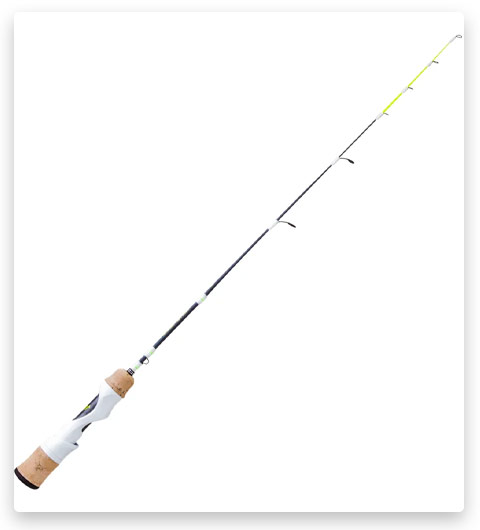
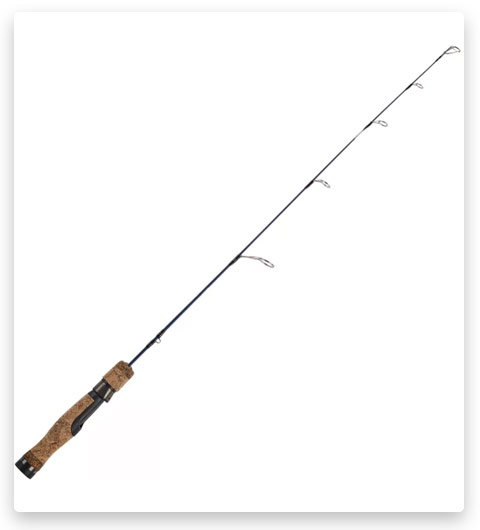
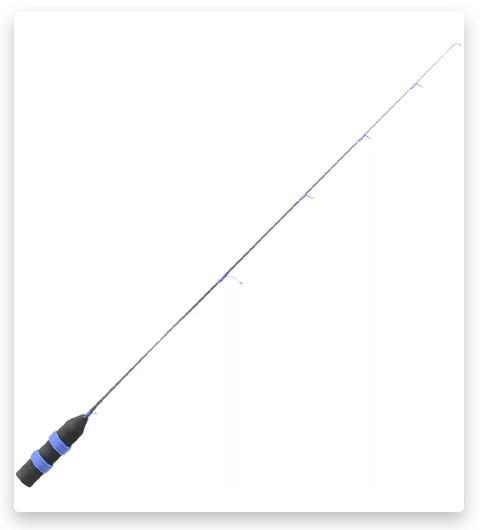
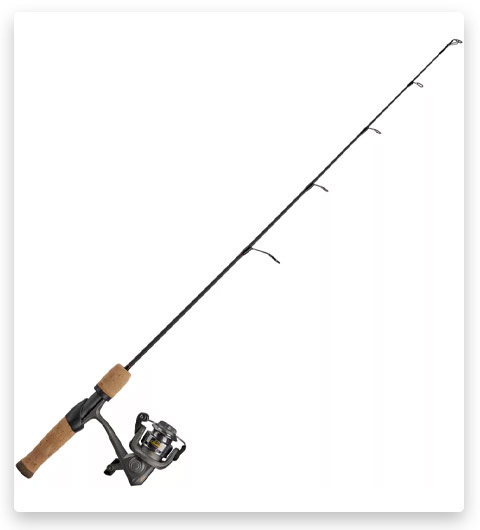
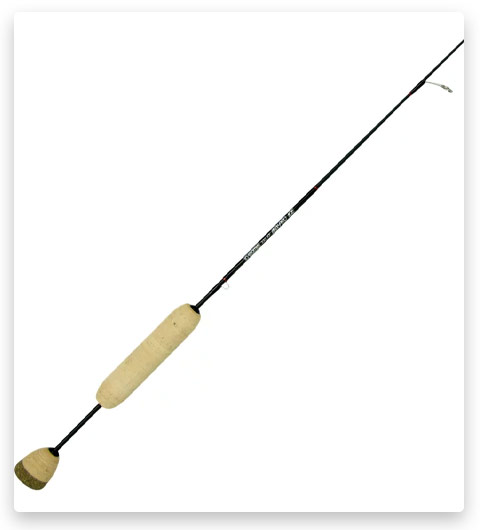
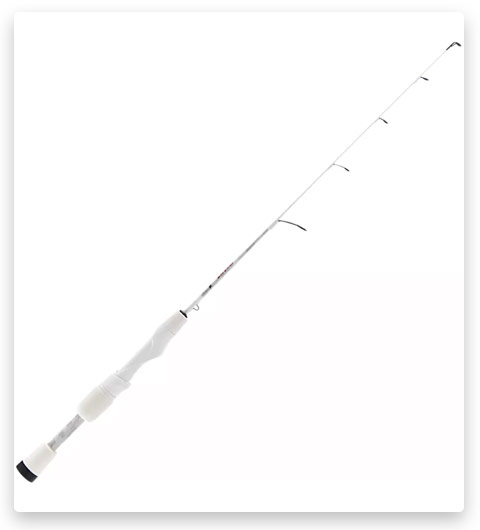
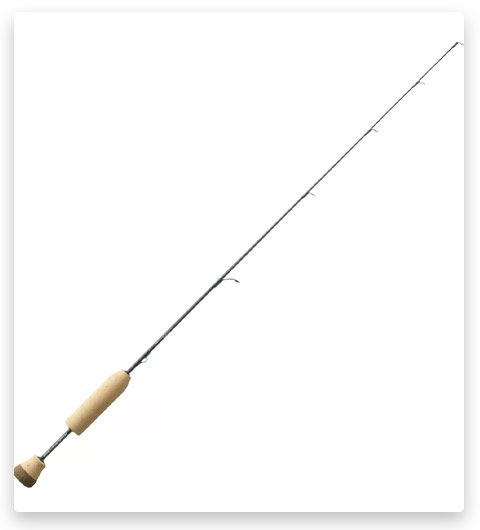
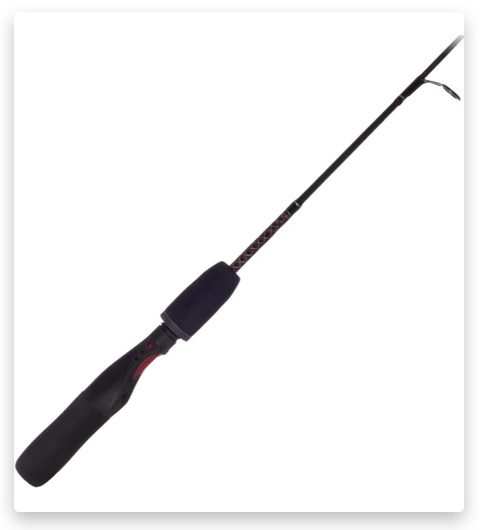
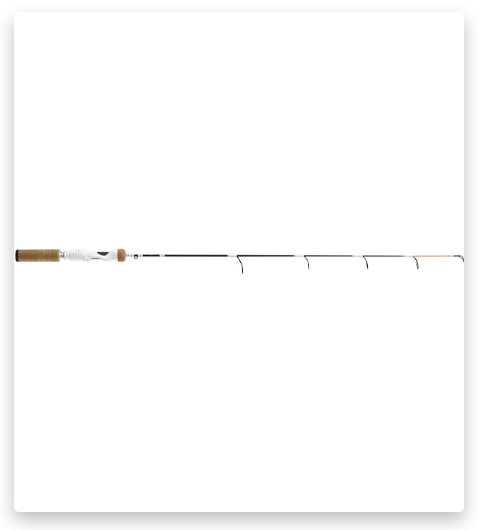
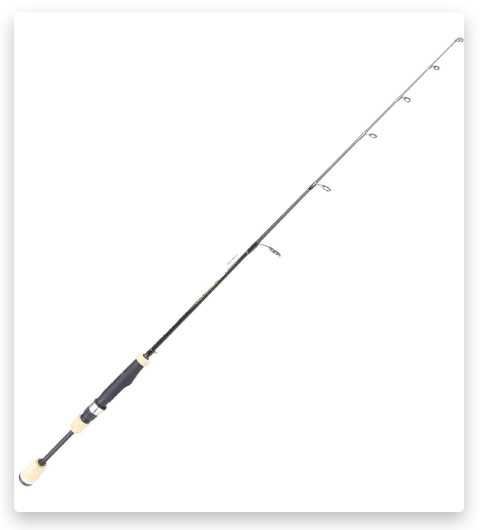
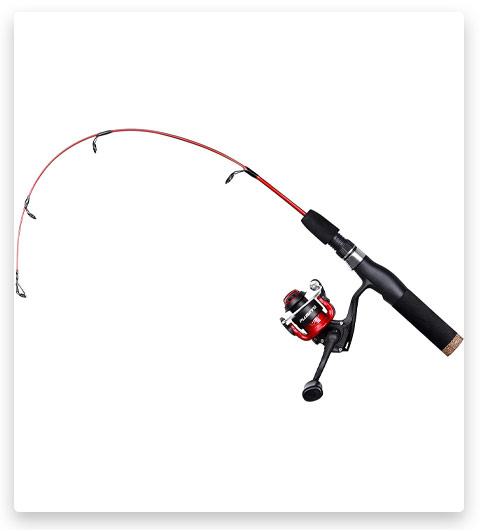
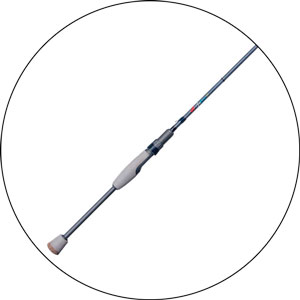
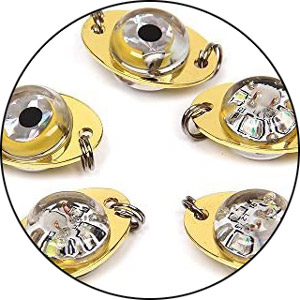
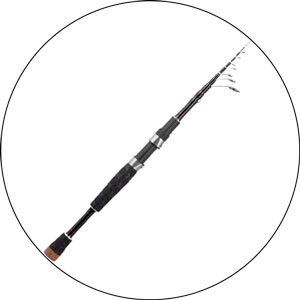
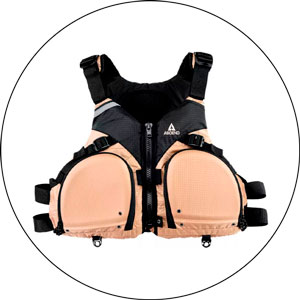
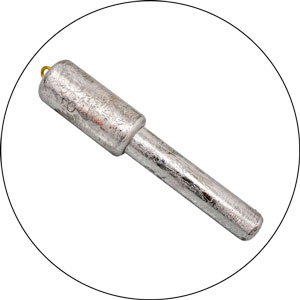
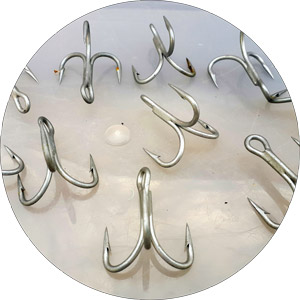
I’ve found that a lake trout ice fishing rod with a good backbone or a stout base section works best. I prefer using spinning reels since bait caster line levelers tend to freeze up in the cold weather. A good gear ratio is important for me. While baitcasters do crank better and won’t twist the line, I still prefer using spinning reels.
For my Lake Trout Ice Fishing Rod, I usually go for a medium-heavy, fast-action rod. I like fast action with a slightly stiffer tip for jigging spoons and other lures. The ideal rod should have a fast action and good backbone but also provide a nice bend to help absorb those headshakes. If you’re fishing in super deep waters, a stiff rod will help you get that hookset needed to penetrate the fish’s mouth.
When it comes to line, I stick with a 10lb braid and an 8lb fluoro braid. I use a 2500 spinning reel with a good drag. I don’t bother with bait casters when using braid outside. Overall, finding the right combination of rod, reel, and line can make all the difference in your success on the ice.
My friend who specifically targets lake trout has recommended the TUCR LTP and the St Croix Custom Ice in both the Trophy Taker and Apex Predator sizes. He speaks highly of all three and never misses a chance to talk about them when we discuss ice fishing rods.
However, where I fish, we don’t typically use a rod to target lake trout. Instead, I opt for a “Cuban Yoyo” with braid, a fluorocarbon leader, and a 2oz bucktail jig. Hand lining is quite enjoyable as you can really feel every movement of the fish. That being said, I’m not saying you shouldn’t use a rod. There are affordable and simple alternatives that can effectively handle large fish.
As for the difference between spinning and baitcasting ice rods, it may seem like a silly question, but it’s valid. From what I understand, there isn’t much difference in terms of their purpose, as both spinning and baitcasting rods are designed for ice fishing.
However, baitcasting ice rods typically have a smaller, lighter reel that sits atop the rod, while spinning rods have the reel hanging beneath the rod. Ultimately, it comes down to personal preference and what feels comfortable for you.
I totally agree with you about the benefits of using a baitcasting style reel for ice fishing in deep water. It’s much easier to operate with one hand and retrieve more lines with fewer turns of the handle, which comes in handy when you’re fishing in 80’+ or trying to reach suspended fish. And when it comes to the rod, I prefer a stiffer one with a solid backbone to ensure a strong hook set, especially for hard-mouthed fish like lake trout.
I’ve also had trouble finding ice fishing bait casters, so what I do is just use a standard baitcaster on my ice fishing rod. I actually repurposed an extra Abu Garcia baitcaster (I can’t remember the model) that I had on an open-water trolling rod and swapped it onto my ice-fishing setup. The main advantage is that standard bait casters have larger spool capacities than typical ice fishing reels, which are ideal for deep-water fishing. Let me check the model for you.
As someone who has tried several Frostbite rods, I must say that the Burnt/Twilight series is quite impressive given their price range. I personally own a dipstick, fantastic, royal flush, run & gun, and a slugger, and they have all performed well.
However, I must caution that the Slugger might be overkill for most situations unless you’re targeting truly monstrous lake trout in the 40″ 20lb+ range. It’s an absolute beast of a rod, and I only purchased it because of a crazy clearance sale. I thought I could use it for hanging giant ciscos for pike on my iFish, but it’s way too much rod even for the 10lb pike I’ve caught on it.
I recently had the opportunity to use the Lake Trout Precision rod from Tuned Up Custom Rods, and I must say it’s an awesome piece of equipment. Despite its relatively high price tag, it’s fully customizable, which is a major plus.
During my fishing trip, I even caught a 40lb sturgeon with this rod, and it handled the fight with ease. The tip had just the right amount of play to keep small walleye hooked and avoid losing them. Overall, I was thoroughly impressed with the Lake Trout Precision’s performance and versatility.
If you’re willing to invest in a high-quality rod that can handle big catches and provide an enjoyable fishing experience, I highly recommend giving Tuned Up Custom Rods a try.
What a beautiful catch! Although it appears to be a rainbow trout, not a brown trout. I just wanted to offer some quick advice in case you intended to release the fish.
Trout have very fragile jaws, and it’s important to handle them carefully to avoid injuring them. Most people don’t quite hold them the way you are in the photo. The safest way to hold a trout is to keep it horizontal with one hand gently supporting its body from underneath, while the other hand is wrapped around the tail area (known as the “caudal peduncle”) to keep a secure hold on the fish.
There are many helpful graphics available online that demonstrate the proper technique. I wish someone had taught me how to hold trout correctly when I was starting out, so I always try to share this advice with others.
It really depends on what and how you’re fishing. If you’re looking to save some money, you can get away with using the same reels for both summer and winter fishing. Personally, I take my 2500-size spinning reels off my larger rods and put them on my ice rods in the winter. That being said, you can also buy ice fishing combos for pretty cheap, typically for under $50.
In my experience, when it comes to ice fishing rods, the most important factor is what bait you’re using. While I don’t think my light rods would break with a big fish, they wouldn’t be very effective for jigging heavy bait. For tungsten jigs, I prefer a light rod, but for bigger baits, I go for a medium/heavy rod.
During the summer months, you can’t really go wrong with an Ugly Stik rod and a Pflueger President reel, unless you’re looking for specific rods for certain applications.
When it comes to ice fishing, the type of rod I use really depends on the fish I am targeting. For Lake Trout and Whitefish, I opt for a Heavy or Medium Heavy rod, around 34 inches long. For Walleye, I go for a Medium to Medium Light rod, but if I’m targeting larger Walleye, I’ll use a heavier rod.
In terms of length, I think longer is generally better, but it also depends on whether I’m fishing inside a hut or not. If I’m in a hut, I go for a shorter rod, but if I’m outside, I’ll use a longer one. However, I don’t want it to be too long as I need to be able to hold my rod and reach the hole to grab a fish.
My rods are all St. Croix Premier, but the older models require tape to hold the reel on. They were relatively inexpensive at the time but had good blanks and eyes.
In terms of action, I prefer fast or extra fast for lighter jigs and finesse baits, and moderate for dead bait. For a general rod, a medium fast action rod with a length of 24 to 36 inches is a good choice for ice fishing. For open water fishing, a 6’6″ to 7’6″ rod with a medium fast action is ideal.
When it comes to choosing a fishing combo, there are a lot of factors to consider. Where you’ll be fishing, what you’ll be targeting, what you’ll be fishing from, and your preferred type of reel are all important considerations. As for me, I would recommend spending no more than $150 on a combo, which would leave enough money for either one higher-end combo or two more basic ones.
If you’re just starting out, a medium-power, fast-action spinning setup is a good all-around option. With a budget of $450, you could split it between a St. Croix rod (such as the Premier, which runs about $200) and a Shimano reel.
This combination should cover most things, but it will limit you to a maximum lure weight of 5/8-3/4 oz and a lighter line, which may make some bass and pike techniques out of reach. However, this setup is all you need for walleye and you can catch just about anything with it. A $450 setup should last a decade or more, while two $225 setups might show signs of wear after a few years if used regularly.
If you prefer two basic combos over one higher-end one, I would suggest a 7-foot, medium or medium light power, fast action spinning combo with a 2500 size reel for light baits, rivers, and smaller species, and a medium heavy power, fast action baitcasting combo with a 150 or even a 200 size reel for pike, large lake trout, and heavy bass lures. The $99-$150 rods and reels from both Shimano and Daiwa will be suitable.
Baitcasting reels may have a steeper learning curve, but they offer more power than comparable freshwater spinning setups and more accuracy than any spinning gear, which is advantageous when dealing with heavier lures or casting around cover. Shimano DC reels control the spool with a computer, making them easier to use, but they can strain your budget slightly.
Ultimately, visiting an independent tackle store and discussing your needs with the staff can be helpful in finding the right products for you. They can recommend specific products and help you navigate the mess of specifications.